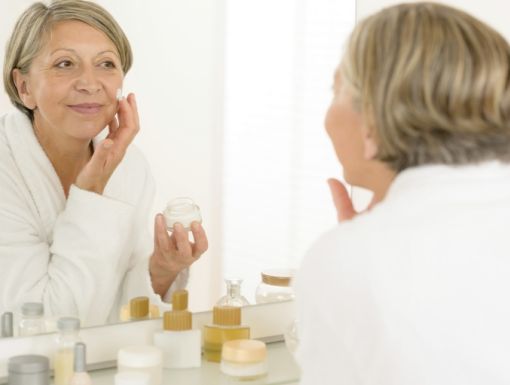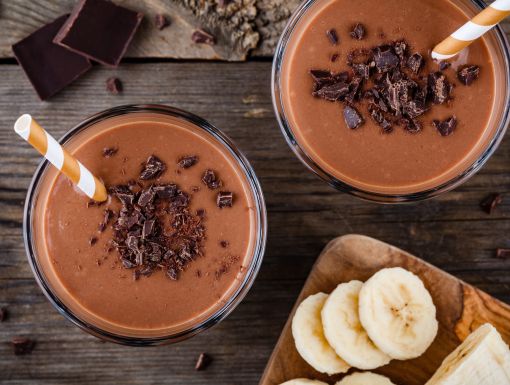
The Best Anti-Aging Foods to Live Longer and Look Younger in 2025
If your skin has been a bit lackluster lately, it might be related to what you’re eating – or not eating. The “inside-out” approach, or the use of nutrition as an antiaging tool, is becoming an increasingly popular means to a more youthful-looking complexion. And while no food can give you instantly dewy, glowing skin, there are some foods that have been studied to help boost skin health. Read on for a few of them.
What causes signs of aging?
Our skin is a window to our overall health and a reflection of everything that’s happening inside our bodies, from our nutritional status to our liver function. Our skin shows signs of aging as a result of both factors that we can’t control, like genetics and time, as well as external influences such as sun exposure, smoking and pollution.
Get food and fitness tips delivered to your inbox every week! Sign up for our free newsletter.
The aging of our skin is a complex, multifaceted process, and while we can’t stop aging from happening, we do have some level over control of it. Nutrition is one of these ways.
How can food prevent signs of aging?
Our everyday metabolic processes, combined with factors like sunlight and smoking, inevitably result in the formation of free radicals. These free radicals attach to the collagen and elastin in our skin, breaking them down at a more rapid rate. A diet rich in antioxidants will help negate the effects of these free radicals that compromise the integrity of our skin.”
The following foods may help slow the skin aging process.
Antioxidant-rich foods
Ultraviolet (UV) light from the sun can lead to skin damage, and subsequently wrinkles. And while some UV light can get past sunscreen, antioxidants in the skin may also help boost the protective effects of sunscreen, thus preventing UV light from having as deleterious a photo-aging effect.
Antioxidant-rich foods include:
- Green tea (especially matcha tea)
- Carrots
- Red peppers
- Spinach
- Kale
- Broccoli
- Strawberries
- Kiwifruit
- Cantaloupe
- Blueberries
- Cranberries
- Blackberries
- Red beans
- Pinto beans
- Artichoke hearts
Probiotics
Probiotics are well-known for their role in digestive health, but now we have another reason to include these beneficial bacteria in our diets. Not only can immune-boosting probiotics promote skin healing, they can also help alleviate allergic and inflammatory skin conditions, like eczema and psoriasis.
Top food source of probiotics include:
- Yogurt with live active cultures
- Kefir
- Buttermilk
- Miso
Foods that speed up signs of aging
Limiting your intake of certain foods can be just as significant in the appearance of your skin. As is often the case, sugar and fat are the two big buzzwords – but for opposite reasons.
Too much sugar is at the top of nearly every dermatologist’s list of “diet don’ts,” but surprisingly, too little fat also can cause skin issues.
The metabolism of sugar increases the production of glycated end products, which have the direct effect of accelerating collagen breakdown. The result: Skin is more prone to the formation of fine lines and wrinkles.
Sugar also causes an inflammatory response in the body, and anything you can do to reduce inflammation can help improve the skin’s appearance – acne, in particular. Cutting back on sugar doesn’t mean just limiting soft drinks and sweets. You should also steer clear of inflammatory foods like white starches, including rice, pasta, potatoes, and breads. Rather, you should incorporate more non-starchy vegetables and whole grains instead. A square of dark chocolate (lower in sugar, and higher in fiber and antioxidants) is a good way to satisfy a sweet tooth.
As for fat, on the other hand, our most well-intentioned efforts to avoid it may be doing our skin more harm than good. Following a strict low-fat diet (less than 20% of calories from fat) can actually be detrimental when it comes to our skin’s appearance,” says Dr. Julie Mermilliod, board certified dermatologist and System Chair of Dermatology with Ochsner Health. “We need to consume enough fats to maintain our skin’s hydration.”
Studies have shown that higher intakes of total fat, monounsaturated fat, and even saturated fat seem to improve skin hydration and elasticity. “Dehydrated skin is more easily damaged and looks older more quickly,” says Mermilliod. “And skin elasticity is an important target for anti-aging regimens, since a decrease in elasticity is one of the reasons that firm, toned skin becomes loose, sagging skin.”
Certain medications which impact fat can also have a corresponding impact on the appearance of our skin. Patients on cholesterol-lowering drugs often get very dry, flaky skin, as these medications pull the fats from the skin, as well as from the bloodstream.
If you think you need to add a little fat back into your diet, try to keep the emphasis on heart-healthy fats like omega-3 and monounsaturated fats such as:
- Top food source of DHA-rich Omega-3s include: Wild Atlantic salmon, mackerel, tuna and rainbow trout
- Top food source of ALA-rich Omega-3s (small amounts of ALA are converted into DHA): Flaxseed oil, ground flaxseed and walnuts
- Top food source of monounsaturated fat: Macadamia nuts, avocado and olive oil
Keep in mind that no matter how nutrient-packed your diet is, good nutrition is only one contributor to looking gorgeous. But when we maximize our nutrition for our skin, our entire body reaps the benefits. And, PS, our skin may look a notch better, as well.



